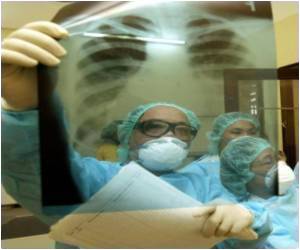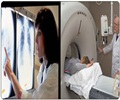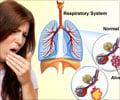A study conducted by researchers in Boston says that a simple, minimally-invasive technique using cells from the interior of the nose could help clinicians detect lung cancer in its earliest stage

"Our data suggests that evaluating gene expression changes in nasal cells found in the interior surface of the nose may serve as a non-invasive approach for the early detection of lung cancer in smokers," said study author Christina Anderlind, MD, Instructor of medicine at Boston University Medical Center.
Lung cancer is the most common cause of cancer mortality, with an average five-year survival rate of only 15 percent. However, survival rates are highly dependent upon how advanced the cancer is when detected.
"At an early stage, the five-year survival rate is 60 percent compared to only 2 percent at a late stage," Dr. Anderlind noted. "Despite this fact, early diagnosis is hard to achieve since the diagnostic tests currently available are highly invasive, such as open lung biopsy. We wanted to determine if a minimally invasive site like the nose could be used to diagnose cancer in its early stages, when there is a much greater chance of long-term survival."
For their study, the researchers collected nasal epithelial cells from thirty three smokers who were undergoing medically-indicated bronchoscopies for suspicion of lung cancer. Of these patients, eleven were found to have benign disease and twenty two had lung cancer. Brushings were taken from the right or left nostril and profiled on microarrays, a process that allows researchers to study gene expression changes.
"Microarrays allow us to get a detailed portrait of the expression levels of a large number of genes simultaneously, with our goal being to then sort through all these expression levels to find genes that differ in their expression between patients with lung cancer and those with benign disease," Dr. Anderlind said.
The researchers identified 170 genes that were differentially expressed between patients with and without lung cancer. They also found that genes linked to colon cancer and adenocarcinoma, as well as genes that trigger cell division and blood vessel growth, were expressed more heavily in patients with cancer. Genes involved in tumor suppression were also expressed at lower levels in these patients.
Advertisement
"In this study we used the same principle as we used in our earlier studies of bronchial tissue, only this time, those methods were used to study nasal cells," she said. "Our hypothesis was that the upper airway epithelium of smokers with lung cancer displays a cancer-specific gene expression pattern, and that this airway nasal gene expression signature reflects the changes that occur in lung tissue."
Advertisement
"This study is a pilot study and our results are preliminary," she said. "Although we did have some indication based on previous studies that we might find gene expression changes in nasal cells, it was unexpected that normal-looking airway cells located at a distance from the lungs would show a specific gene signature that distinguishes patients with cancer from those with benign disease," she said.
A larger study funded by the National Cancer Institute''s Early Detection Research Network (EDRN) in collaboration with Steven Dubinett and David Elashoff at UCLA and with Allegro Diagnostics Inc, is planned to confirm the results, she noted.
"The development of a nasal biomarker for diagnosis of lung cancer would make early diagnosis of lung cancer more feasible, allowing patients with radiographic findings that are suspicious for lung cancer to be evaluated in the clinic with nose brushings," Dr. Anderlind said. "We are planning to analyze at least 100 more samples from patients with benign disease and lung cancer, to be able to validate our results and to work toward the development of a nasal biomarker for early detection of lung cancer."
"Gene Expression Profiles In Nasal Epithelium Differ Between Smokers With And Without Lung Cancer" (Session A18, Sunday, May 15, 8:15-10:45 a.m.,Korbel Ballroom 2A-3A (Lower Level), Colorado Convention Center; Abstract 19736)
* Please note that numbers in this release may differ slightly from those in the abstract. Many of these investigations are ongoing; the release represents the most up-to-date data available at press time.
FOR MORE INFORMATION, CONTACT:
Keely Savoie or Brian Kell
[email protected] or [email protected]
ATS Office 212-315-8620 or 212-315-6442 (until May 13)
Cell phones 917-860-5814 or 516-305-9251
ATS Press Room: 303-228-8473 (May 15-18)
Poster session time: 8:15-10:45 May 15
Location: Korbel Ballroom 2A-3A (Lower Level), Colorado Convention Center
Source-Newswise














